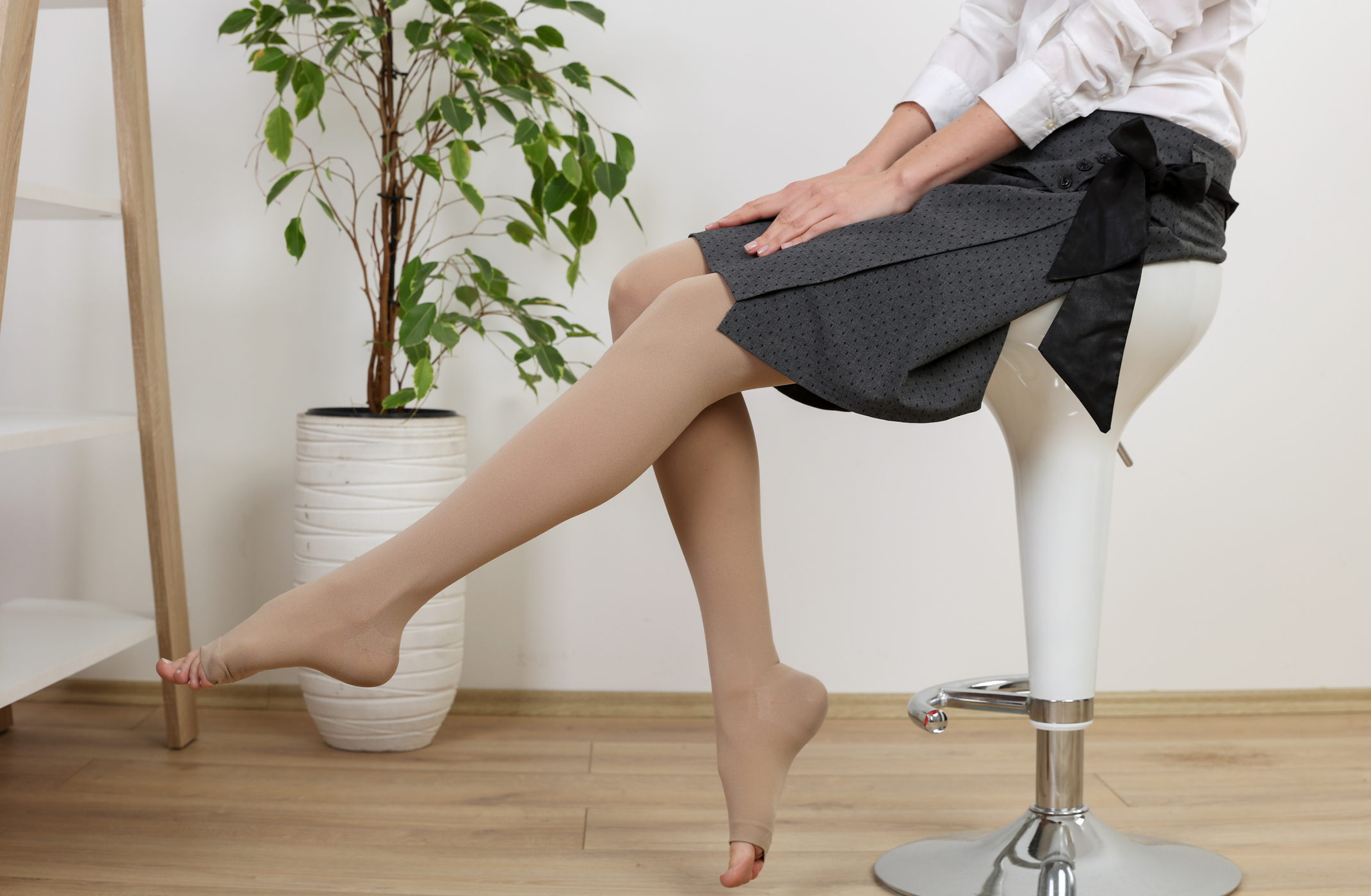Vein-related problems are becoming one of the more common chronic conditions in the United States. And with that, there are many options on how to treat these issues. One non-invasive measure that may be an option for you is using compression therapy.
About 40 percent of the US population may be affected by chronic venous insufficiency, a condition that can lead to more serious issues, including varicose veins. If you have chronic venous insufficiency, you typically experience heavy legs and swollen ankles at the end of the day. You may also experience pain or night cramps in your legs.
If you’re susceptible to venous insufficiency, whether by genetics, pregnancy, chronic conditions such as obesity or heart disease, or work/lifestyle habits, then wearing compression socks may benefit you. They help contract muscles around the veins to keep blood moving back up toward the heart.
Why Do I Get Vein-Related Issues?
These symptoms occur when the valves in your veins become damaged, and it becomes difficult for blood to move up your legs toward your heart against gravity. The blood then starts pooling around your ankles and in your calves. With time, malfunctioning valves can result in varicose veins — twisted, rope-like veins of blue or purple color, visible underneath your skin.
If you suffer from any of these conditions, compression stockings might help.
How Does Compression Therapy Work?
Compression therapy involves the use of stockings that are specialized socks that can be worn from the foot to the calf, knee or thigh. In some cases, they come in the form of tights that reach up to the waist. They also come as "sleeves", footless socks that stretch from the ankle to the knee. These specialized stockings have a gradient of pressure (tighter in the foot and gradually less so toward the knees or thighs.) When worn properly, they’ll reduce swelling in the feet and also improve venous circulation in the legs. The pressure that these stockings put on your ankles and legs compresses the surface arteries and veins, helping the vein valves to function properly and blood to flow back to your heart without obstructions.
How Do I Use Compression Socks?
It’s recommended to put on compression stockings in the morning, even before you lower your legs and get out of the bed.
Sleeping in a horizontal position makes your vein valves function more effectively than when sitting or standing. In a vertical position, gravity kicks in and blood flow is compromised due to the damaged valves. That’s why your ankles and calves usually feel fine in the morning, and get swollen and heavy as the day progresses.
Putting on compression stockings in the morning will keep the valves in the right position to support healthy blood circulation in your legs during the day.
If you’ve already developed a vein-related condition, compression stockings can help alleviate symptoms such as:
- Swollen ankles
- Heavy or aching legs
- Fatigue and pain
- Restless legs
- Night cramps
In addition, compression stockings can provide many benefits, especially in situations that aggravate venous conditions such as:
- Prolonged standing or sitting
- Traveling on a long flight or on other means of transportation with limited leg room
- Pregnancy
What’s the Right Compression Level to Use?
You should always talk to one of our doctors to get advice about the right compression level. There are four main levels of compression:
- Mild compression, which should be used if you have mild chronic venous insufficiency to support healthy blood flow so your legs can feel lighter
- Moderate compression, which is more effective and is usually recommended once you’re experiencing symptoms of spider or varicose veins
- Firm and extra firm compression, which are typically recommended by a doctor in more serious cases of various venous diseases, including deep vein thrombosis, leg ulcers, and lymphatic edema
In addition to choosing the right compression level, you need to choose the right size stocking. To ensure the proper fit, you’ll need to take measurements. Here are a few tips:
- Take measurements of your legs before you get out of bed in the morning.
- For knee-high socks, measure the narrowest part of your ankles and the widest part of your calves. Then sit up on your bed, placing your feet on the floor and bending your knees so your legs form a 90-degree angle. Take the measurement between the bent knee of each leg and the floor.
- For thigh-high stockings, start the same as taking measurements for knee-high socks. Continue by standing up and measuring your thighs under your buttocks. Finally, measure the distance between your buttocks and the floor.
Taking these measurements can sometimes be tricky, so don’t be afraid to ask for help or talk to one of our vascular doctors at the Vein Institute of New Jersey. In fact, you should always discuss using compression stockings with your doctor as some people are not candidates for it, such as those suffering from peripheral artery disease.
Find out more …









.jpg?width=944&name=Castle-Connolly-Top-Doctors-Emblem-Large%20(4).jpg)